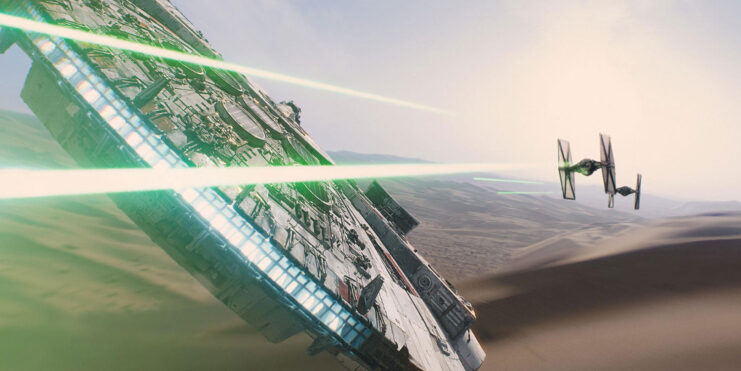Pick 10 great sci-fi ships – just 10. It seems easy, but what do you leave out? Chad Armstrong picks his top 10 iconic flying vehicles. Are your favourites on his list?
Science fiction has always been a haven for brilliant, iconic design. Unbound by the realities of real-life construction and even basic physics, designers and model-builders have fired up the imagination and created imagery that is lodged in our collective consciousness. Here are my top 10 iconic ships.
10. Destiny (Stargate Universe)
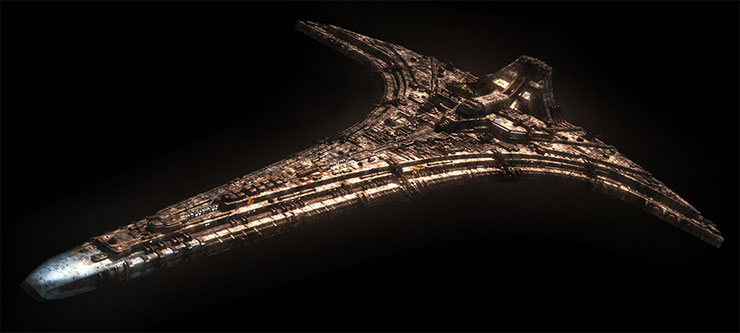
Stargate didn’t have a lot of use for spaceships but the sight Destiny made me wish they’d made more. An ancient starship, powerful enough to house its own Stargate, with a shape reminiscent of a giant religious icon in space. From a narrow forward tip Destiny’s body fans out into an oversized crescent engine, giving it an unusual sense of scale. Classical yet mysterious, Destiny lives up to its name.
9. Liberator (Blake’s 7)
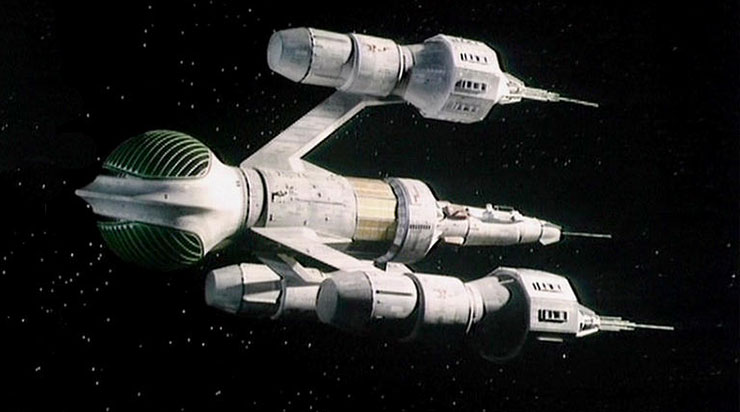
Hand a newbie a model of Blake’s 7’s Liberator and chances are they’ll think the sphere is the cockpit, not the engine. The unusual look of the ship took simple, recognizable geometric shapes and played with them.
From the spherical engine to the triple nacelles and central ‘rocket-shaped core, the mysterious Liberator looks elegant up against the totalitarian Federation vessels. Surely we’re due Blake’s 7 reboots by now?
8. Borg Cube (Star Trek: The Next Generation)
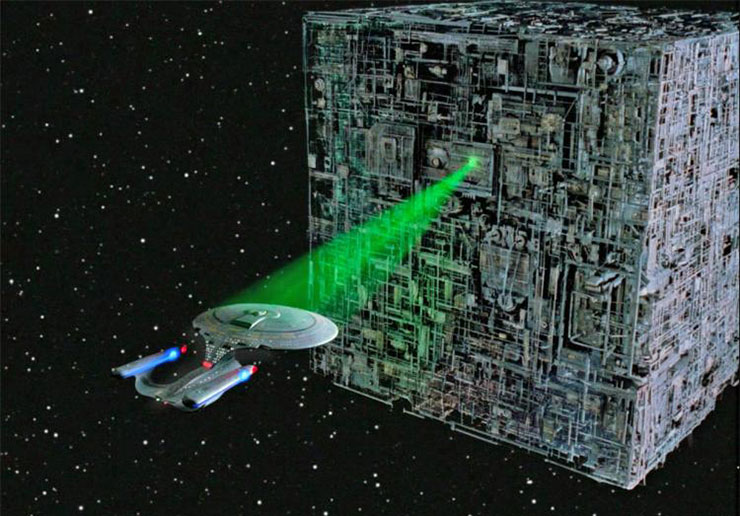
The Borg Cube stands out for its sheer un-aesthetic design. No beautiful curves or flourishes. No beginning or end. Functional, modular, utilitarianism in frightening sci-fi form. Production Designer Richard James (and later John Eaves) gave it’s hull an intricate lattice-work of ‘circuit-like’ elements lending it a sense of imposing scale.
Positioned against the rounded shapes of a Federation starship, the iconic Cube looks indifferent and menacing at the same time.
7. U.S.S. Cygnus (The Black Hole)
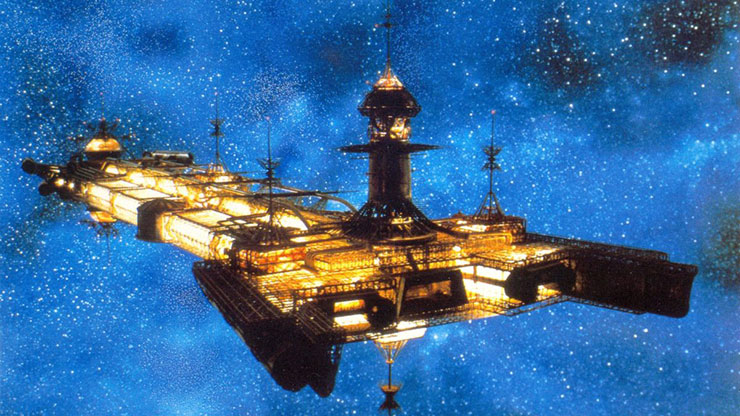
Not many science-fiction models end up being given to the MoMA (Museum of Modern Art), but the U.S.S. Cygnus from Disney’s 1979 movie The Black Hole was. While the film’s quality is questionable, the design work is exceptional. The Cygnus looks more like a crystal cathedral in space, than a research vessel, instantly bringing to mind a mix between gothic grandeur and a Victorian conservatory.
Maybe the fact the film flopped stopped others from mimicking the design (or the fact it was 12-foot long and took more than a year to make), but the Cygnus is by far one of the most beautiful ships in space.
6. Eagle transporter (Space: 1999)
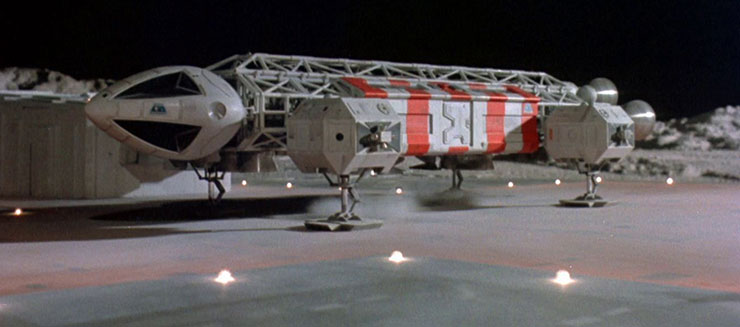
Space: 1999’s Eagles were multi-purpose transport ships with an interchangeable “service pod” (a nice money-saving idea for the TV production, and an idea we’d later see return in Deep Space Nine’s multi-functional runabouts).
Designed by Brian Johnson, the Eagle is best remembered for the “Phillips-head” design of the beak that remained constant across all its uses. Like the film 2001: A Space Odyssey the look bears a resemblance to contemporary, practical space technology, but with a futuristic tweak, and would serve as an inspiration for the Millennium Falcon.
5. Thunderbird 2 (Thunderbirds)
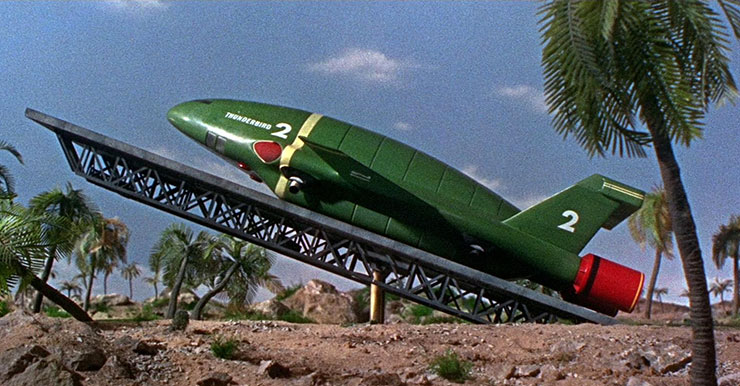
Gerry Anderson’s classic Thunderbird 2 is one-of-a-kind. Thunderbirds 1 and 3 were variations on your basic rocket and Thunderbird 4 is cute (and 5 is a pretty standard space station). Thunderbird 2 is the one kids wanted to play with. It’s “fat-belly” design gives it an approachable touch. Its appeal may also have been enhanced by the fact the toy came with a tiny Thunderbird 4 inside – two toys for the price of one!
4. Vorlon transport (Babylon 5)
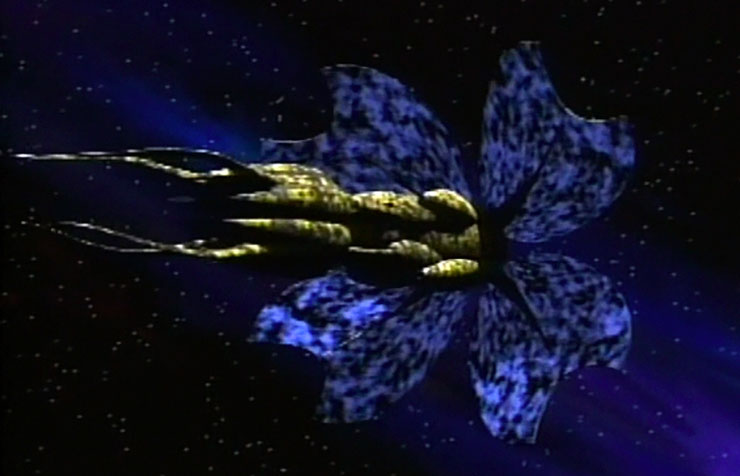
Babylon 5 had no shortage of alien species to play with, but by far the most interesting design-wise was the enigmatic Vorlons. The pilot episode builds up to the arrival of the new Vorlon ambassador Kosh on this alien-looking transport. The Vorlon Transport takes its visual cues from organics rather than technology (designer Ron Thorton based it on a mix between a squid and a clove of garlic).
Placed next to the metallic cylinder of Babylon 5 it instantly reads as ‘alien’. The organic influence can be seen in later sci-fi shows like Farscape’s Moya, the ships of Star Trek: Voyager’s Species 8472 and the Romulan mining ship Narada from JJ Abrams’ Star Trek but none look this elegant.
3. Millennium Falcon (Star Wars)
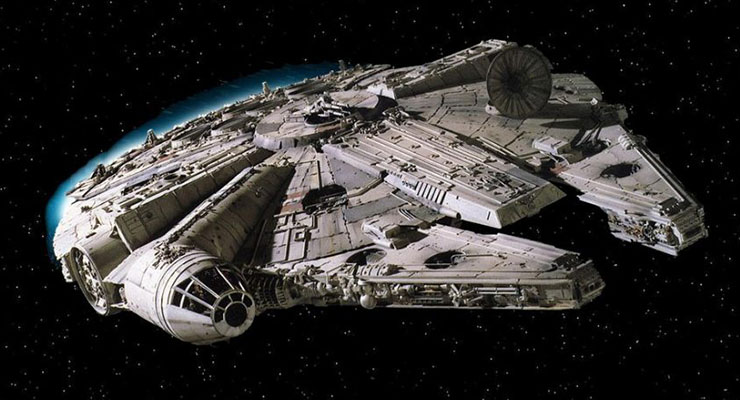
The Falcon is the sci-fi version of the coolest car on the street. Famously whipped together in four weeks after the original design was rejected for being too similar to Space: 1999’s Eagle transport, George Lucas suggested something more flying saucer-like.
But that wasn’t good enough for model maker Joe Johnston who took the basic shape, added the offset cockpit and extended forward “cargo mandibles” giving us the unusual shape we have now. Be eternally grateful they permanently lost the ‘escape pod’ section seen in the film Solo: A Star Wars Story, this bird looks better without it.
2. TIE Fighter (Star Wars)
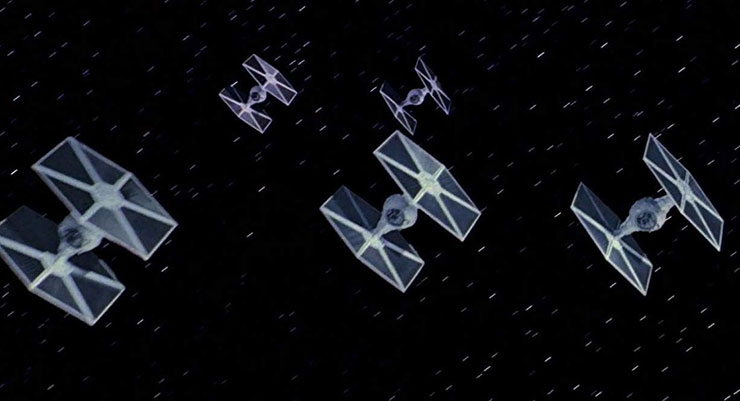
Star Wars is filled with sleek and memorable designs built on simple geometric shapes – the cross of an X-Wing, the triangular Star Destroyers, the spherical Death Star – but the TIE Fighter stands apart for being unlike anything else. While the X-Wing was recognisably a fighter plane, the Star Destroyer was a battleship – the TIE Fighter was boldly different.
No visible means of classic propulsion they glided through space with a silhouette you can instantly recognise. And the name, I know it stands for “Twin Ion Engine”… but let’s be honest, they picked the name because they look a bow-tie, right?
1. U.S.S. Enterprise (Star Trek)
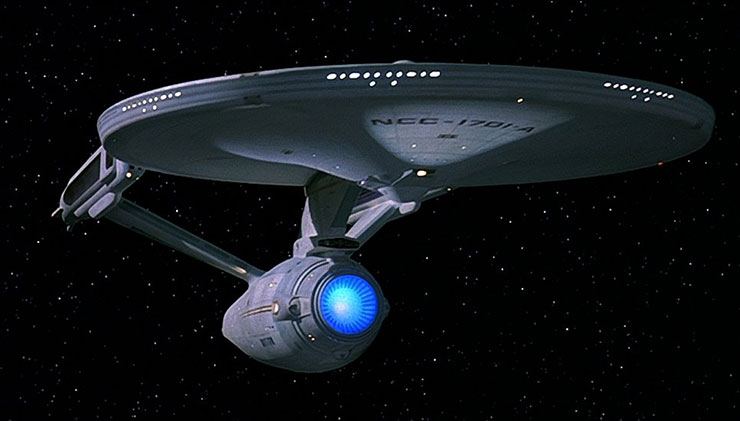
The silhouette of the Federation starship has remained unchanged since Star Trek debuted. The Enterprise’s saucer section and two nacelles joined to a main body stand apart from almost all other science fiction design. Original designer Matt Jefferies’ design stepped away from any concept of propulsion (Roddenberry’s insistence) and embraced the concept of the “flying saucer” with a new angle.
Every future starship would keep these design basics and add small tweaks (a flatter version for the Enterprise-D, a pointed nose for Voyager, no main body for Reliant). Proving itself to be timeless and versatile enough for adaptation – the Enterprise is truly iconic.

